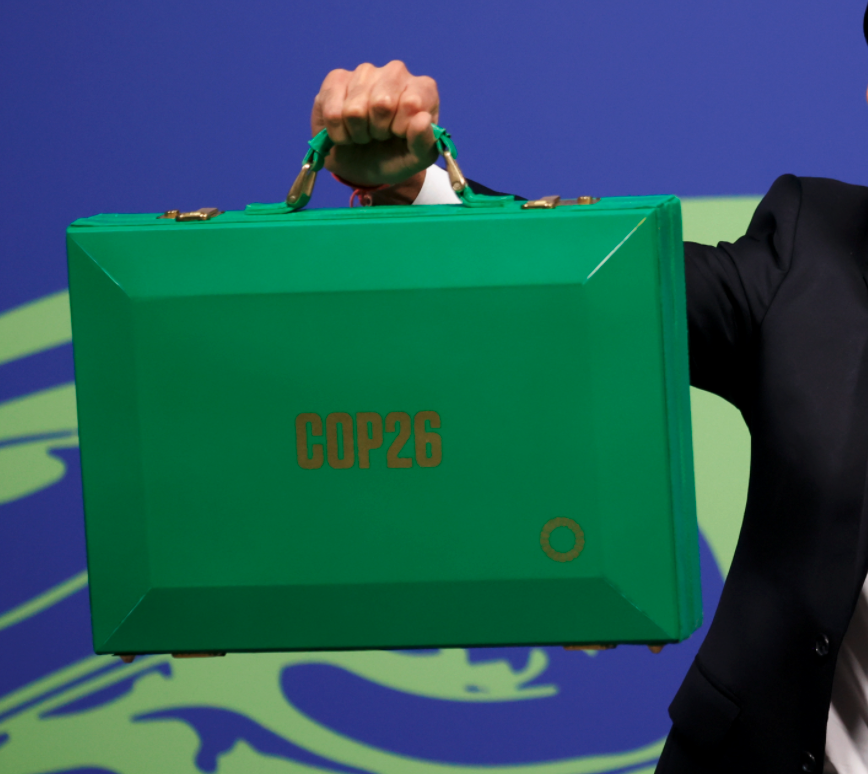by DANEILA GABOR

Wednesday, November 3, was private finance day at COP26. For those who follow central banks closely, the event was a chance to gauge whether their recent turn to climate-conscious policy making would translate into ambitious decarbonization announcements. After all, private finance is essential to the survival and profitability of the fossil-dependent economy—it creates dirty credit at prices that ignore climate effects. Such a pervasive market failure, central bankers now routinely argue, is significant enough to generate financial stability risks and to justify new climate policies within independence-centered mandates.
Mandatory decarbonization – central banks missing in action
If central banks were ambitious about shrinking private lending to carbon activities, the COP26 press release would have announced plans to explicitly penalize dirty lending in both monetary policy and regulatory frameworks, and specified an ambitious timeline for doing so. These plans would upgrade the Bank of England’s “carrots first, sticks later” approach to decarbonizing its corporate bond purchases (which first rewards, and only later envisages penalizing) to a carrots and sticks approach better aligned with the climate urgency. By rapidly ending the historical carbon bias hardwired into collateral frameworks and unconventional corporate bond purchases, as they have repeatedly promised to do, central banks would ensure that the cost of capital for high carbon activities increases significantly, redirecting financial flows to green activities.
To minimize dirty arbitrage (fossil assets shifting across private portfolios), the central banks might announce the inclusion of private equity and other shadow banks within the scope of the new “carrots and sticks” regime. To further reduce transition risks and preserve an orderly transition, they could recommend new accounting rules for stranded assets (suspending mark to market) in systemic institutional portfolios.
Central banks would also address the structural shortage of green assets by calling on fiscal authorities to collectively develop new regimes of green macro-coordination. The accelerated issuance of green sovereign bonds could absorb the flow of capital leaving dirty activities, and finance nationally-developed green public investment plans and green industrial policies. This might come alongside increased taxation of conspicuous luxury consumption and avoid carbon shock therapy by carefully deploying carbon prices without allowing them to dictate the pace and direction of decarbonization.
Finally, mandatory decarbonization would also accelerate the energy transition in the Global South. By correcting the market mispricing of dirty credit, central banks would redirect the trillions of Global North institutional capital towards renewable energy and green transport infrastructure there.
But this was not the Finance Day press release at COP26. Instead, the Network for Greening the Financial System—the 100-plus central banks working together to design new climate frameworks—made disclosure of climate risks and stress test scenarios the centerpieces of their climate press release. So very 2019 voluntary decarbonization.
The return to the 2019 baseline of voluntary decarbonization—generally remarkable given the ambitious rhetoric of the June 2021 Green Swan conference organized by central banks—is even more puzzling for the Bank of England. Its governor, Andrew Bailey, outlined three “pivot points” of “climate ambition” in a speech at COP26: micropudential tools (green capital requirements), scenario analysis, and disclosure of climate risks. This was a strangely framed ambition, since it sets the only central bank with an explicit environmental climate mandate back to 2019—before it started the work of greening its corporate bond purchases within a “mandatory decarbonisation” framework.
The central bankers’ rhetoric on Finance Day at COP26 was closely aligned to the preferences of financial capital. It represents a win-win attitude to attacking the climate crisis—one that does not feature a robust role for public investment, nor a commitment to swift decarbonization.
GFANZ and the Wall Street Consensus
Phenomenal World for more
